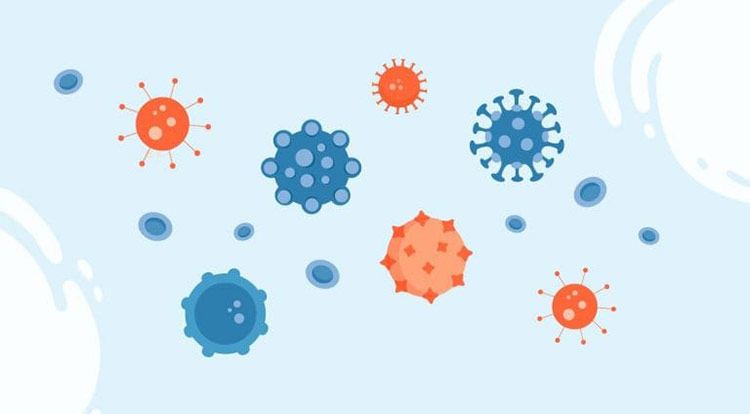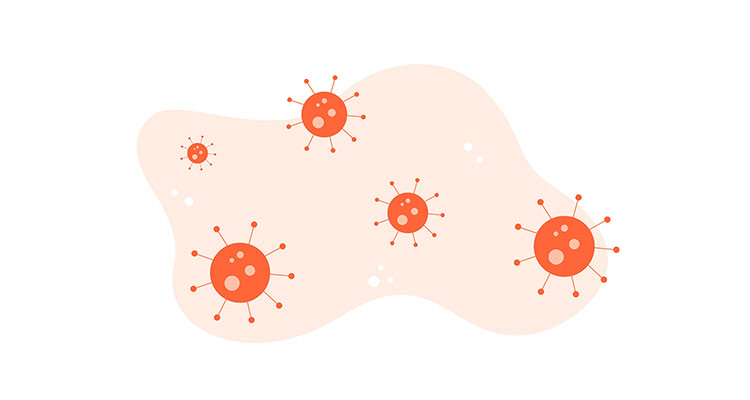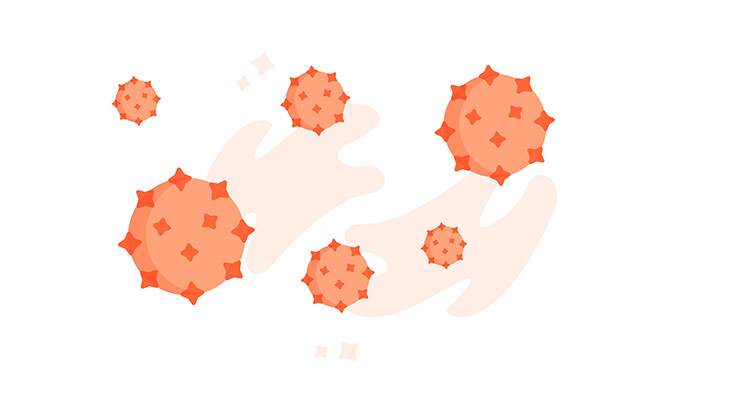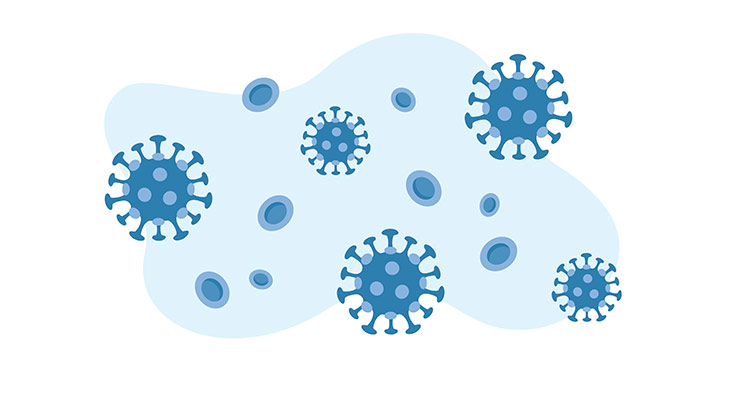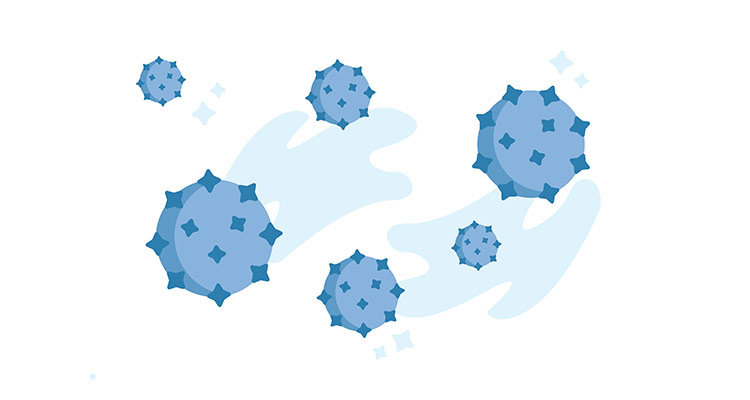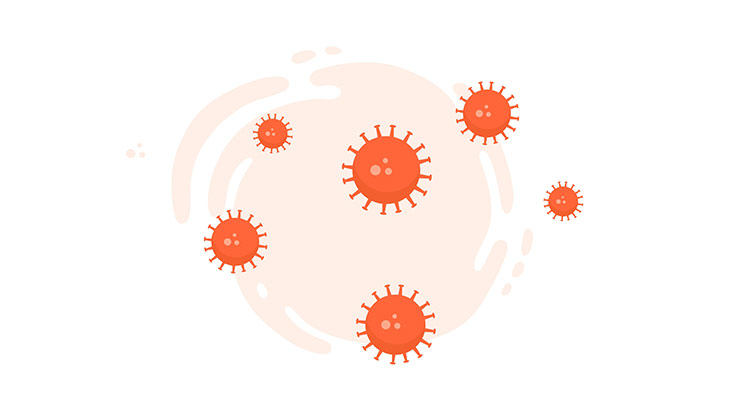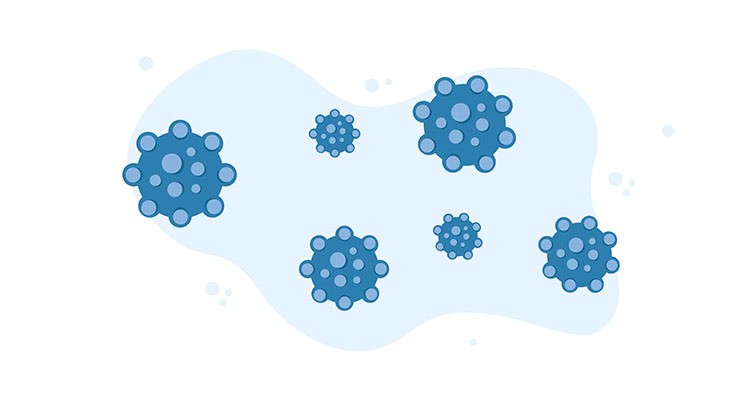In the list of sexually transmitted diseases (STDs) and infections (STI), viral STDs are often the most troublesome. While we are all familiar with viruses that are easily mediated such as the common cold, influenza or smallpox, sexually transmitted diseases caused by viral infection are often a little more difficult to treat. This specific subset of STDs is initiated by microorganisms, called viruses. While other STDs can be easily cured with medications such as antibiotics, viral STDs are a little more complicated. Despite this, there are treatment options available that allow millions of people to lead full, happy and generally uninterrupted lives with viral STDs. Not to mention, there are a variety of methods that can be used to prevent spreading or contracting a viral STI. The first step to protecting your partner’s and your sexual health is by staying informed and getting tested regularly. Get tested at one of our convenient and private STD testing centers near you.
The following provides a detailed walk-through of what viral STDs are, which are caused by viruses, their most common signs and how to best avoid contracting or spreading these infections.
Types of Viral STDs
Viral STDs are defined by the specific virus that initiated the infection. These viruses can have various effects on the body that range from simple annoyance to more serious conditions. The common trait among all STIs, including viral STIs, is their asymptomatic nature.
What are viral STDs?
STDs are separated into categories according to their cause of infection, whether that be from a virus, bacteria or parasite. For a general idea of which types of STDs fall into these categories, viral STDs include herpes and HIV, bacterial STDs include gonorrhea, chlamydia and syphilis and parasitic STDs include trichomoniasis or pubic lice.
Viral STDs, as explained previously, are sexually transmitted diseases that are caused by an infection of a specific virus. Conveniently, these diseases are named directly after their culprit virus. These would include the herpes simplex virus, human immunodeficiency virus, human papillomavirus, hepatitis A virus, hepatitis B virus, and hepatitis C virus.
What is a viral STI?
You may wonder, what is a viral STI, and in what way is it different from an STD? These two terms are often used interchangeably, however, they refer to different stages of an infection. While a viral sexually transmitted infection (STI) marks the initial transmission of a virus and is often asymptomatic, a viral sexually transmitted disease (STD) is a more advanced stage of the infection that displays signs. Hence, the difference between STIs and STDs would be their stage of progression and severity.
Viral STDs List
This Viral STDs list will keep you informed on each virus, understand their effect on the body, how they are typically transmitted and the recommendations for testing. Staying educated on the necessary basics will help you maintain sexual health. Luckily, there are 3 STDs treatable by vaccination within this list.
What STDs are Caused By Viruses
Viral STDs are one of the more numerous in terms of variety. While other categories of STDs have only a handful, there are a total of 8 different viruses that have been identified as the cause of viral STIs and STDs.
Since viruses are not the typical organism, they have a unique way of duplicating. Viruses are unable to reproduce on their own and require the help of living cells. So like tiny biological pirates, these viruses most often take advantage of sexual interactions to commandeer the ships of living cells and replicate. However, some of these biological pirates are significantly more common than the rest.
What is the most common viral STD?
The most common viral STD in the United States would be HPV. Its asymptomatic nature is one of the reasons why it is so common. Since viral STDs often do not present signs, many people go without treatment, do not know to practice safe sex and unknowingly transmit the virus to their partner(s). For this reason, it is important to understand how these viral STDs affect the body and how they spread.
Herpes Virus Type 1 and 2
The herpes virus is one of the most common viral STDs in the United States. This virus is broken up into 2 subsets that are typically referred to as HSV-1 and HSV-2. This viral STD can manifest itself as either oral or genital “cold sores”. While the type of herpes virus can have an impact on where the sores are located, its subsets are typically distinguished by severity. Like other STDs, this virus is transmitted via bodily fluids.
HIV Virus
The HIV virus is usually spread through sexual activity that involves contact with permeable membranes, open sores or infected bodily fluids (not including saliva). This virus can be categorized as either type 1 or type 2 and progresses in stages by damaging the body’s immune system. These stages include acute and chronic, and if left mediated, the virus can develop into acquired immunodeficiency syndrome (AIDS). While this STD is one of the more dreaded of the bunch, most individuals exposed to this viral STD live full and happy lives.
HPV Virus
The HPV virus is the most common STI in the United States with 79 million reported cases across the nation, as mentioned by the CDC. This virus can be spread through vaginal or anal sex regardless if signs present themselves. The HPV virus is often associated with genital warts and its connection to various cancers. While this virus may seem daunting, there are vaccinations available that can safeguard against transmission.
Hepatitis A Virus
The hepatitis A virus is a sexually transmitted disease typically transmitted from fecal matter to mouth and develops in the liver after an incubation period of about 28 days when it lies dormant. Similar to the HPV virus, vaccinations can prevent the spread of this viral STD. While this virus does not normally pose an extreme health risk and can be taken care of by the body, testing and treatment are recommended to prevent complications.
Hepatitis B Virus
The hepatitis B virus is similar to hepatitis A, however, this virus often has a longer incubation period and is found in high concentrations in the blood–making it transmittable via sexual contact, during birth or through reused needles. This infection can last a limited time or remain lifelong, often depending on the age of transmission. According to the CDC, 94-98% of adulthood cases were acute, while chronic cases are more likely for infants and children.
Hepatitis C Virus
Finally, while the hepatitis C virus is not normally transmitted via sexual activity, there is research that suggests that it is possible. This virus is more often transmitted by the misuse of needles since it is a bloodborne infection. It can cause liver inflammation and potential liver damage if not treated. While the body can sometimes take care of the acute version of this virus, it more often transitions into a chronic condition that may lead to complications if not managed.
Viral STD Symptoms
While initial infections from these viruses typically do not exhibit physical manifestations, advanced stages of these viruses often do. Due to this, remaining knowledgeable about the most common signs of these viral STDs will help to protect you and your partner from possible transmission and receive treatment as soon as possible.
HIV Infection
The symptoms of HIV infection can vary depending on the progression of the virus. An acute infection, when the virus begins to take effect, may be misinterpreted as the flu. Both men and women can experience fever, chills, muscle aches and more during an acute or chronic infection. However, this viral infection often does not present signs and the only way to diagnose this STD is through HIV testing.
Herpes Infection
A herpes infection is infamously known for lacking physical identifiers–even for years after initiation transmission. However, herpes symptoms present themselves in the form of sores around the mouth or genitals. A type 1 infection is usually less severe, while type 2 may come with a fever, chills, swollen glands and other signs. After the first outbreak, this virus often lies dormant without signs. This asymptomatic nature makes receiving herpes testing vital to protecting your sexual health.
HPV infection
A low-risk HPV infection is usually identified by the presence of genital warts. These warts can range in both size and shape, but trained medical professionals should be able to diagnose them with a brief examination. On the other hand, high-risk cases will not present symptoms of HPV. Due to the connection between HPV and various cancers, it is important to receive testing if suspicions should arise and understand how to prevent HPV from spreading.
Hepatitis A Infection
According to the World Health Organization (WHO), signs of a hepatitis A infection may include jaundice, nausea and diarrhea before its incubation period. However, the presence and severity of hepatitis A symptoms typically depend on the age group. In general, infants are less likely to experience severe signs. While hepatitis A is usually not fatal with proper nutrition and rest, the possibility of complications warrants testing if there is a concern.
Hepatitis B Infection
Signs of a hepatitis B infection for both men and women may be fairly similar to a hepatitis A infection and include signs such as fever, abdominal pain, jaundice and nausea. Like all STIs, individuals who have been infected with this virus generally do not show hepatitis B symptoms. If signs are present, they usually do not turn up until after its dormant period of around 90 days after contraction. If you should suspect that you may have come into contact with this viral STD, hepatitis B testing is available.
Hepatitis C Infection
As mentioned by WHO, only about 20% of individuals who have come into contact with a hepatitis C infection show signs. However, hepatitis C symptoms are somewhat similar to its predecessors and may include jaundice, dark urine, nausea or reduced appetite. Due to the effects that the different versions of this viral STD can have on the liver and the varying incubation periods, it is important to receive hepatitis C testing.
STD Virus Misconceptions
Due to the stigma of viral STDs, many have misunderstandings about them. Some misunderstandings or STD myths can be resolved with simple facts, while others need more in-depth explanations. Remaining knowledgeable of misinformation, whether it be provided online or by mouth, will help you make the right decisions about your sexual health and that of your partner. The following questions are common questions that people like you may have about viral STDs.
What is the difference between viral vs bacterial STDs?
The biggest difference between viral and bacterial STDs has to do with the initial cause of the STI which leads to the development of a disease. While viral STDs are caused by viruses and often do not have a cure, bacterial STDs result from an overgrowth of bacteria and can be cured if caught early.
What is the difference between genital warts and herpes?
Understandably, some may be confused about the difference between genital warts vs herpes sores. The defining difference between these viral STDs would be the different culprit viruses, their effect on the body, curability and the treatment options for each.
How long can you live with HIV?
Contrary to popular belief, individuals living with HIV can lead long, normal and happy lives thanks to modern medicine. Proper treatment can have a significantly positive effect on how long you can live with HIV. While there are methods to decrease the possibility of transmission, some wonder how hard it is to contract HIV.
Can you kiss someone with herpes?
The question of can you kiss someone with herpes is a decision that is entirely up to you. However, it is important to remain aware of the risk of transmission, since this viral STD is commonly transferred via skin-to-skin contact with the infected area, such as the mouth.
Can you get herpes from sharing a drink?
This is a very common question in regards to viral STDs. Since the herpes virus can be spread through kissing, it is understandable that one might speculate if this virus can live on the rim of a glass. So, can you get herpes from sharing a drink? Generally speaking, this should not be too much of a concern, but precautions are always encouraged.
Viral STDs Treatment and Prevention
The first step toward sexual health is to practice sexual health precautions and prevention techniques. While anyone diagnosed with one of these infections would be understandably concerned and overwhelmed, it is possible for people diagnosed with any of the aforementioned STDs/STIs to lead perfectly happy lives. The treatment of viral STDs can often vary depending on the type and severity of the infection, and these routes for treatment are only possible through testing.
Can viral STDs be cured?
The initial question that anyone diagnosed with a viral STD would be, can it be cured? The answer to this question can have different answers, depending on the viral STD. For example, an HIV infection, herpes infection and HPV infection do not currently have cures. While the hepatitis viruses can all be taken care of by the body (not necessarily cured) with proper treatment, the hepatitis B virus and hepatitis C virus have the possibility of developing into chronic conditions. This is especially true if the person has also come into contact with the HIV virus, which attacks the body’s ability to fight off infection.
How are viral STDs treated?
The type of treatment recommended for each viral STD varies on severity. As mentioned previously, our immune system can sometimes take care of a hepatitis infection as long as the severity is acute. However, chronic cases may call for antivirals. Herpes can be offered similar treatment, and HIV is mediated with antiretrovirals. Since most viral STDs have the possibility of becoming chronic conditions, establishing safe-sex practices early on in relationships is a vital step toward maintaining sexual health.
Preventing Viral STIs
Viral STD prevention is similar to the methods used for other STDs and is accomplished by avoiding STI transmission. Recommended precautions include the use of protective barriers during sex, abstinence and routine testing–two of these options are a little more realistic for most. Using barriers such as internal condoms, external condoms and dental dams are all valid and generally effective methods of prevention. However, the effectiveness of barriers such as these is limited by their coverage. This is especially true for the herpes virus which is notorious for viral shedding and open sores. It is also recommended to get tested routinely for viral STIs to prevent the infection from developing into a disease.
Testing for STD Viruses
There are a variety of different ways to get tested for viral STDs. Online services and in-person clinics are just two examples of routes for testing. Considering the pros and cons of the testing options available, such as private testing centers vs. at-home testing, can help you decide the best route for your sexual health needs. The specific testing method for each viral infection depends but usually involves a blood, cell or fluid (secretions, saliva, discharge) test. There are even rapid testing options such as HIV RNA early-detection testing and herpes early-detection testing. In summary, getting tested regularly is the only way to know if you or your partner is free of transmissible viral STDs.

